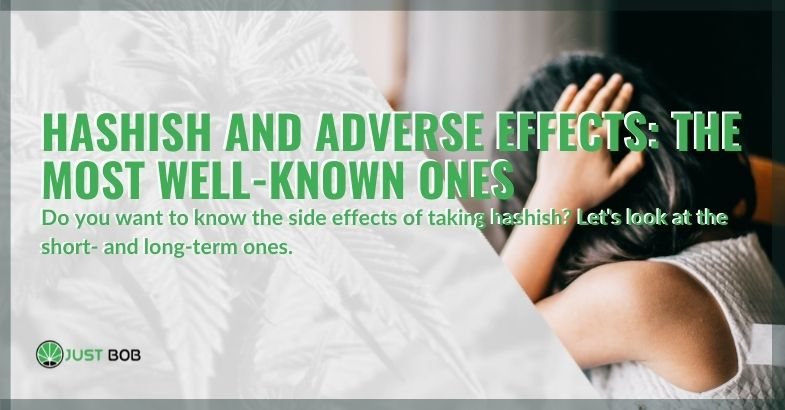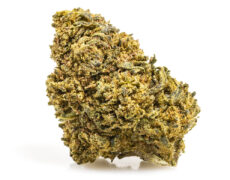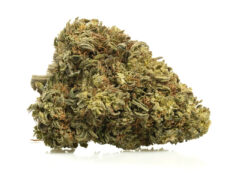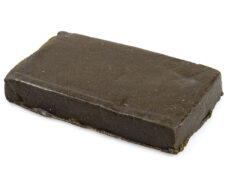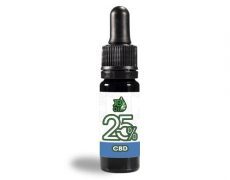Modified on: 16/01/2024
DO YOU WANT TO KNOW THE SIDE EFFECTS OF TAKING HASHISH? LET’S LOOK AT THE SHORT- AND LONG-TERM ONES
Originating centuries ago, hashish was one of the best known and most potent hemp derivatives.
This product usually looks like a rectangular loaf or sphere, ranging from dark brown to honey. Yet, at the same time, its aroma releases a myriad of unmistakable earthy, grassy and spicy scents.
Since its inception, hashish has been appreciated for these aromas and the relaxing effects of taking it.
However, ‘smoking’ (another name for this hemp derivative) also causes a lot of short- and long-term side effects, which is why, in the UK and many other countries, it is considered an illegal product (quite different from legal hashish with a high CBD content).
Would you like to know more about hashish and the adverse effects of its use?
Let’s find out what they are.


What’s hash from cannabis plant?
Hashish, derived from the cannabis plant, is a concentrated form of cannabis that has been used for various purposes, including recreational and medicinal use. It is commonly referred to as “hash” and is distinct from other forms of cannabis products due to its potent nature.
Hashish is produced by compressing trichomes, the fine growths on cannabis plants that contain high levels of THC (tetrahydrocannabinol), the psychoactive compound responsible for the psychological effects of cannabis. The dark green and sticky resin extracted from these trichomes form small blocks or larger quantities, depending on the production method.
The effects of hashish use are similar to those of marijuana, which includes altered perception, heightened sensory perception, and increased appetite. However, hashish is known to have a more concentrated impact due to its higher concentrations of THC. The psychological effects may vary among individuals, and not everyone experiences them in the same way.
Chronic use of hashish, like other forms of cannabis, can lead to addiction. Heavy users may develop cannabis use disorder, experiencing withdrawal symptoms when attempting to stop using the substance. Long-term effects of hashish use can impact motor coordination, problem-solving abilities, and overall brain development, especially in individuals who begin using it at a young age.
While hashish is considered an illicit drug under federal law, its recreational use has been legalized in certain states and countries. However, it is essential to be aware of the potential health risks associated with its use. Chronic use has been linked to chronic bronchitis, lung cancer, and cardiovascular issues, such as increased blood pressure.
Treatment options for hashish use disorder are available, and individuals seeking assistance can explore resources provided by organizations like the National Institute on Drug Abuse or American Addiction Centers. It is crucial to note that the long-term effects of hashish may vary depending on individual factors, the frequency of use, and the method of consumption, whether through smoking tobacco, e-cigarettes, or a water pipe.
Hashish, as a form of cannabis product, poses both short-term and long-term risks to the user’s health. Understanding the potential effects and risks associated with hashish use is essential for making informed decisions about its consumption and considering available treatment options for those experiencing negative consequences.
Hashish and long-term effects: here are the negative ones
Hashish is a product made from trichomes extracted from the inflorescences of hemp Sativa, the parts of the plant with the highest concentration of cannabinoids, including THC.
THC, or tetrahydrocannabinol, is an active psychotropic ingredient—a substance that can alter the mental and motor abilities of those who use it—that is illegal in many countries worldwide, including the UK.
It is this cannabinoid that is responsible for the main side effects of hashish.
Not to be confused with CBD—another well-known cannabinoid extracted from legal hemp—which, by contrast, has no psychotropic or addictive effects and which you can find easily in CBD flowers.
Let’s see, then, what the negative effects of hashish are:
Habits
Those who regularly consume hashish run the risk that the substances it contains may trigger various mechanisms in the brain. In particular, it appears that after a long period of abuse of hashish, the brain, having become accustomed to the presence of cannabinoids, may change it’s functioning to the point where it can no longer resume its regular activity;Abstinence
Using hashish for long periods leads to a constant and unstoppable desire to take more and more of it: addiction. Failure to take hashish or other marijuana derivatives containing THC can lead to withdrawal of varying degrees. The most common symptoms are anxiety, nervousness, severe irritability and insomnia;Tolerance
Eventually, people who habitually consume hashish develop a kind of tolerance to its active ingredients. Whereas they used to get some effect from a minimal intake of the product, after some time, they would have to increase their doses of hashish to get the same effect;Respiratory system problems
People who smoke hashish-based joints, just like smokers of conventional cigarettes, develop various respiratory problems, which mainly manifest themselves in coughing, catarrh, wheezing, throat discomfort and so on.
Read also: Butane and BHO extraction: DIY has already caused far too much harm to people


Hashish and short-term adverse effects
In the previous paragraph, we talked about the long-term side effects of hashish consumption. However, we want to clarify that the consumption of this cannabis derivative may also cause some unpleasant consequences in the short term.
What does it consist of?
Among the most common side effects of hashish are:
redness of the eyes;
increased heart rate;
panic attacks and anxiety;
paranoia;
loss of coordination and numbness;
distorted perception of surrounding reality (images and sounds);
nausea;
dry mouth;
headaches…
Again, the adverse effects are mainly triggered by the intake of THC. What’s more, when the smoke is not first-rate, it may likely have been ‘cut’, i.e., altered by the addition of other non-natural and potentially harmful substances.
Read also: Hemp biomass: meaning of the term and uses
Exploring Drug Abuse: Cannabis Plants and Withdrawal Symptoms
Drug abuse remains a pervasive issue globally, with cannabis plants playing a significant role in this complex landscape. The psychoactive effects of marijuana, stemming from its primary components, THC (tetrahydrocannabinol), are well-known. Cannabis sativa and cannabis indica are two prominent species, each with distinct effects on the user. The prevalence of cannabis use disorder is a concern, as chronic hashish users may experience withdrawal symptoms upon cessation.
Hashish, a potent form of cannabis, is extracted to produce hash oil or bubble hash, intensifying its impact. The Drug Enforcement Administration monitors cannabis products due to their potential for abuse, emphasizing the need to understand how much THC, the active compound, is found in various marijuana products. The levels of THC in a person’s system can lead to addiction, paralleling the risks associated with other substances like tobacco and alcohol.
Cannabinoid receptors in the brain and fatty tissues play a crucial role in how cannabis affects individuals. Marijuana use can result in panic attacks and other adverse reactions, necessitating awareness of its impact on mental health. The National Institute on Drug Abuse highlights the need for research into the long-term consequences of cannabis use, especially given the evolving landscape of marijuana products.
American Addiction Centers emphasize the importance of addressing cannabis use within the broader context of drug use. Individuals using drugs, including cannabis, may find themselves entangled in addiction, underscoring the need for comprehensive intervention strategies. As we delve into the intricate web of drug abuse, it becomes apparent that understanding the effects of hashish, levels of THC, and the consequences of chronic drug use is essential for promoting overall well-being and combating substance abuse.
Discovering CBD hashish: a legal product with no psychotropic effects
As we have seen, hashish can have adverse effects on mood, coordination, concentration and many other aspects.
But there is a solution to all this.
Legal hashish, also known as CBD hashish, has been around for some time now.
We are talking about a product made from various plant resins, enriched with CBD crystals and utterly free of THC (the psychoactive and illegal cannabinoid).
Thanks to the absence of this psychotropic substance, users of legal hashish can enjoy all its benefits to the full, without the fear of developing an addiction to the product and without having to suffer the many side effects typical of illegal hashish.
This new addition to the cannabis scene can also be purchased freely in the UK; however, there is still a lack of clarity regarding its consumption, which is why we at JustBob only offer it for collecting purposes.
If you would like to know more about this innovative item and perhaps would like to purchase it to find out what it looks and smells like, visit our CBD shop Justbob today.
At Justbob.shop, you can find many hashes online, perfect for building an enviable collection.
We are waiting for you!

